Traditional Kibbeh in Beetroot Sauce
- AI Kitchen
- Aug 4, 2024
- 5 min read
Updated: Mar 30
Delight your senses with this traditional Middle Eastern dish, where succulent kibbeh stuffed with savory eggplant and meat meets a rich, chunky beetroot sauce. Enhanced with the warm and aromatic Baharat spice blend, this dish is a vibrant and flavorful journey perfect for any occasion.

I'm so glad you're here! I'm on a mission to document my AI prompting journey in the kitchen. I want to keep this site free of obnoxious ads. If you like my content, please consider supporting me
Servings: 6
Prep Time: 1 hour 30 minutes
Cook Time: 1 hour 10 minutes
Total Time: 2 hours 40 minutes
Calories per Serving: Approximately 400 kcal
Traditional Kibbeh in Beetroot Sauce Ingredients:For the Kibbeh Dough:
For the Filling:
For the Chunky Beetroot Sauce:
Instructions:1. Prepare the Kibbeh Dough:
2. Prepare the Filling:
3. Form the Kibbeh:
4. Prepare the Chunky Beetroot Sauce:
5. Cook the Kibbeh in the Sauce:
6. Serve:
Nutritional Value per Serving:
|
Prompt
Not gonna lie, this is not a quick and easy recipe, HOWEVER, it is hands down one of the more delicious things that ever came out of my kitchen!
My husband and I, once upon a time when we just started dating, and had no kids, ate delicious kibbeh in beetroot sauce in a restaurant in Tel Aviv, and ever since I think about it. So I had to try it myself. Now, I just bought eggplant, so I wanted to incorporate it into the kibbeh.
I went to ChatGPT:
Please create a traditional Israeli kibbeh recipe. It should be stuffed with eggplant and meat, and the sauce should be made with beetrootAs usual, it came back with a recipe which answered my ask:

Unfortunately I did not have semolina (almost impossible to find organic semolina where I live):
I don't have semolina . Can I use white flour or unbleached bread flour, or something else?And it adjusted:

As I was reading the instructions, I noticed the recipe calls for deep frying the kibbehs before putting them in the soup, and that is not the type of kibbeh I remember eating. Mine was cooked in the sauce:
I saw somewhere you can freeze the kibbeh instead of frying and throw frozen ones into the beetroot "soup". Also another technique is freezing the filling once formed to oval balls, for easy coating. Lastly, why bulgur in the dough? I have seen semolina, never bulgur. Maybe I just don't have experience, not saying it needs to change, just genuinely curiousAnd it gave me a really decent response:

I still insisted, I want them cooked in sauce, not fried.
I thought you cook the kibbeh in the sauce, instead of frying. Can you adjust recipe in a way that won't make the kibbehs fall apart?And it adjusted:

I then noticed I don't have all spice. So I asked:
Does Baharat spice work in this recipe?Yes, it said:

I then saw the recipe called for grating the beetroot. That would create a bunch of small pieces in the soup. Not what I remembered. So I asked:
why grate the beetroot?And it suggested a modification:

I preferred the chunky type so responded:
yes please update recipe for chunky sauce with longer cookingThen, as I was preparing the dish, I had some questions which I will provide here:
The dough is kind of lumpy should I put it in a food processor so it's a little smoother?And it replied:

And:
Will 40 mins be enough for cooking in the soup?
And:
Why spices in sauce only after 40 mins?
And:
The ratio of beetroot and broth seems off. It's mostly beetroot and I'm concerned it will not have enough room for kibbehs. Should I use a hand blender or add more liquid? Add a step to leave the kibbehs in the refrigerator for an hour before placing them inside the pot. I read that this helps them from falling apart inside the sauce.Scroll to the top for the final recipe or click here: Jump to recipe





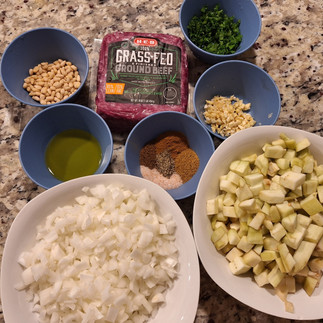







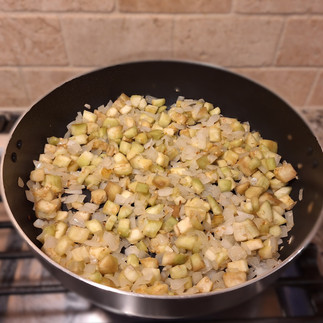









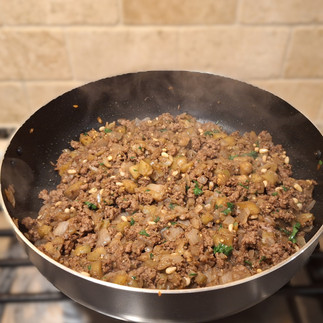

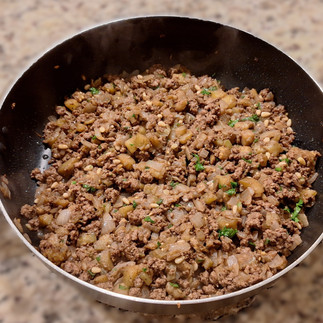



























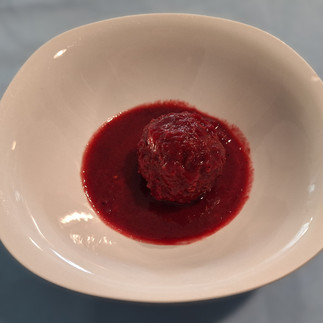



2 Comments